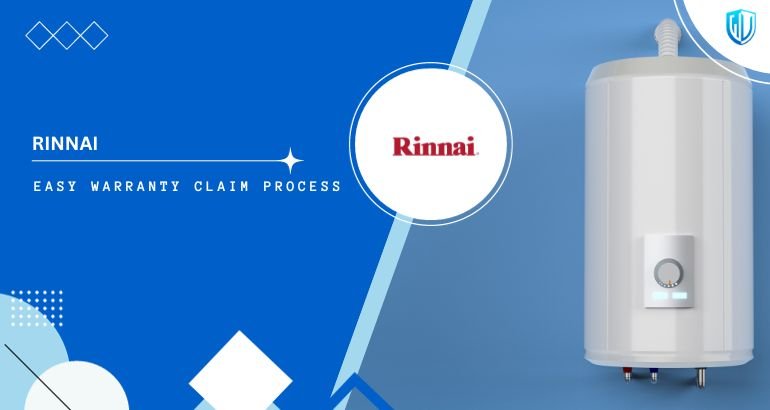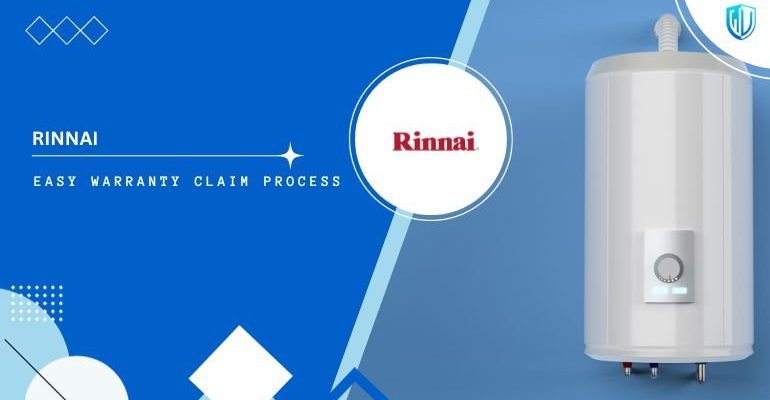
Imagine you just installed a brand-new Rinnai water heater, your trusty companion for warm showers and efficient hot water. Suddenly, it starts acting up—a flickering display, strange noises, or worse, no hot water at all. You remember something about warranty registration and wonder, “Do I have to register my water heater to get it fixed under warranty?” It’s a question many homeowners and renters ask, especially when dealing with appliances that are supposed to last years but sometimes throw a wrench in the works.
Warranty registration might feel like one of those boxes to tick and forget, like signing up for a new app or filling out paperwork you never reread. But here’s the thing—when it comes to Rinnai water heaters, understanding whether warranty registration is required can save you time, stress, and money. So, let’s chat about how Rinnai handles warranty claims, what role registration plays, and a few handy tips if your heater needs troubleshooting or remote syncing in the meantime.
What Is Warranty Registration for Rinnai Water Heaters?
Warranty registration is essentially the process where you formally record your purchase details with Rinnai. Think of it as giving your heater a membership card—something that links your name and address to the specific model and serial number you bought. This can usually be done online or by mailing a form. It might seem like extra paperwork, but it creates a direct connection between you and Rinnai for any future support needs.
Why bother? Registering your warranty helps the company track your product and confirms that you’re the legitimate owner. It also ensures that you’re alerted about recalls, updates, or possible product enhancements. Plus, it’s often the recommended first step if you want to claim repairs or replacements without hassles.
That said, warranty registration doesn’t always have to be mandatory. Some companies require it strictly while others allow you to claim based on your original purchase receipt alone. Let’s dig into how Rinnai handles this part and what it means for you.
Does Rinnai Require Warranty Registration to Make a Claim?
Here’s the thing: Rinnai does not strictly require warranty registration to make a claim on their water heaters. You can usually claim warranty service if you provide proof of purchase, like your original receipt or invoice, which shows the date and place of purchase.
However, registering your product when you buy it is highly recommended. Why? Because it speeds up the process when you do need service or repairs. Without registration, customer service might ask for additional verification or documentation, which can slow things down.
Think of it like this: If you lose your receipt, registered products give Rinnai a way to confirm your warranty status without scrambling. But if you haven’t registered and have lost the receipt, making a claim could become tricky or delayed. So, while not strictly required, registering your Rinnai water heater is a smart move—kind of like buying insurance for your peace of mind.
How to Register Your Rinnai Water Heater Warranty
Registering your Rinnai water heater is actually pretty straightforward. You’ll need some basic info handy, including your model number, serial number, purchase date, and where you bought it. These details are usually found on the water heater’s code label or paperwork included in the box.
Here’s a quick step-by-step rundown:
- Find your product details: Look for the model and serial number on the water heater or its manual.
- Visit Rinnai’s official website: They have a dedicated warranty registration page.
- Fill in your information: Include your name, contact info, purchase details, and product codes.
- Submit the form: Double-check everything before hitting confirm to avoid delays.
- Keep a confirmation: Save or print any registration confirmation emails for your records.
If you’re not tech-savvy or prefer paper, you can also mail in the warranty registration card if it came with your unit. Just remember to send it quickly after purchase to avoid missing the window where registration benefits apply.
Why Registering Your Warranty Matters Even If Not Mandatory
Now, you might be thinking, “Okay, registration’s optional, so why should I bother?” Glad you asked. Here’s why registering your Rinnai water heater can really pay off:
- Faster warranty service: When you register, Rinnai already has your details on file, cutting down verification time during claims.
- Recall notifications: If there’s ever a safety issue or product update, registered owners usually get notified first.
- Proof of ownership backup: If you lose your receipt or move houses, registration acts as a backup record.
- Access to support resources: Registered customers may get priority when it comes to troubleshooting help or remote sync instructions for smart water heaters.
Honestly, it’s like buying a ticket for a concert—you don’t want to lose it, but if you do, having an app with your registration makes reentry a breeze.
Common Warranty Issues and How Registration Helps
Water heaters, Rinnai’s included, can sometimes show error codes, need resets, or require remote pairing if you have a compatible controller. When problems pop up, having a registered warranty means customer support can quickly identify your model and walk you through troubleshooting steps or arrange repairs.
For example, say your Rinnai water heater shows an error code like “12” (which usually indicates a burner ignition failure). Without registration, support might have to ask for detailed info to verify your warranty. With registration, they instantly know your product’s specs and warranty status and can advise whether a reset or service call is warranted.
Plus, registration can help if you need parts replaced. Rinnai water heaters often have serial numbers linked to specific production batches—this can affect the parts available or troubleshooting advice.
Remote Control Sync and Warranty
Some newer Rinnai models come with smart remote controls or app connectivity, which can sometimes require syncing, pairing, or even troubleshooting like battery replacements. If you’ve registered your unit, support teams can provide exact instructions tailored for your model, making the process smoother.
Otherwise, you might spend extra time hunting down the right manual or figuring out reset procedures on your own, which can be frustrating if hot water is on the line.
What Happens If You Don’t Register Your Rinnai Water Heater?
Skipping warranty registration won’t instantly void your warranty, but it can make claiming it more complicated. Here’s what you might face:
- Longer verification times: Without registration, you’ll need to provide more proof to show when and where you bought the water heater.
- Higher risk if receipts are lost: If you misplace your purchase receipt, proving warranty eligibility becomes tough.
- Delayed support and replacement parts: Customer service may take longer to confirm your model and serial number details.
- Missed notifications: Any recalls or updates from Rinnai might not reach you promptly.
Still, if you keep your purchase records safe, you can usually overcome these hurdles. But honestly, who doesn’t misplace a receipt here and there? Registration is a good safety net for that.
Tips for Smooth Warranty Claims on Your Rinnai Water Heater
If you ever need to make a warranty claim, here’s how to make it as painless as possible:
- Register ASAP: If you haven’t yet, do it right after installation.
- Keep your receipt and manuals: Digital copies on your phone or cloud storage work wonders.
- Know your model and serial number: Write them down separately for easy access, maybe on a sticky note near the heater.
- Document error codes and symptoms: Jot down anything unusual; it speeds up troubleshooting and parts identification.
- Contact Rinnai support promptly: The sooner you reach out, the quicker you get help.
Also, if your unit has a remote or smart feature, check batteries and reset instructions before calling support—sometimes it’s a simple fix.
Wrapping It Up
So, is warranty registration required to make a claim for Rinnai water heaters? Not strictly. You can usually claim warranty service with just your original proof of purchase. But honestly, registering your unit right after buying it is one of the smartest steps you can take. It’s like planting a flag saying, “Hey, this is mine!” and makes life easier when water heater troubles strike.
From faster service to peace of mind, registration is a small effort that pays off. Plus, it helps you stay in the loop for recalls, updates, and technical support—especially if you use smart remotes or need troubleshooting help down the road.
So next time you’re unboxing a Rinnai water heater or installing one, take a few minutes to register. Your future self will thank you with a warm shower and zero hassle.
